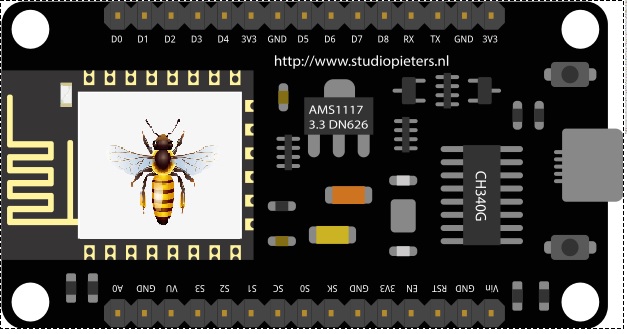Hive monitoring and open project

Hello! 5 days have passed since the previous article on the topic of "smart hive". As they say, thought much and googled. A few years ago there was no such hyip in the field of beekeeping. Now, a whole wave has risen - it seems that everyone is engaged in the Internet of bees - from schoolchildren, students to serious IT giants.
But this wave breaks about the pragmatism of the beekeeping industry.
As a result, we see smiling young faces sometimes against the background of beehives, even less often - with bees, winning start-up contests, and after a year - silence. All this prompted me to the idea of creating an open project in the field of beekeeping (moreover, in the broad sense of the word - not only to “hang a hive with sensors” - but also to build, populate, etc. - up to honey).
For one person can lose interest, go into business, but the community will remain and will develop!
Under the cut is already a fairly well-established concept of a simple monitoring system. How to make an open project out of all this is a task with many unknowns.
To begin with, let's decide what to monitor?
In my opinion, weight sensors are expensive, but there is a place to be.
The main parameters are temperature and humidity, plus the analysis of the buzz of bees.
I want to dwell on the latter in more detail, because it is the spectrum that is needed, not the noise level.
A year ago, the news about the application analyzing the beehive buzz caused a smile.
In fact, this characteristic can say a lot, even about the filling of honey with honey.
If you approach roughly - the beekeeper puts "seed" in the hive - an empty frame with a "flat" sheet of honeycomb.

Next, the bees finish building the cells and use them for their tasks - storing honey or raising offspring. But even if the beekeeper puts frames with already rebuilt honeycombs (honey pumping field for example), even in the process of sealing the cells, the space between the frames decreases - the sound spectrum changes. Not to mention the "singing" of the uterus, the sound of the family in its absence and during the exit of the swarm.

It looks like this sound spectrum of the hive. Programmatically, I would select three peaks, and monitor the frequency and intensity of each peak. Total, 6 bytes. Plus, one for temperature and humidity - eight.
And you know, standard network equipment monitoring systems may well be suitable for this purpose - Cacti / Zabbix / Icinga - they simply use native and familiar databases ;-), although RRDTool may be even better.
In such a scenario, for simplicity and availability of the system assembly, it is advisable to use only ESP8266 + DHT11 (humidity and temperature) + analog sound sensor.
Every 15 minutes, wake up the MK, measure 3 parameters, turn on WIFI - send 8 bytes - and go to sleep.
Without further ado, you can finish the library ARDUINO FFT - fast Fourier transform.
It remains to come up with something to control the discharge of the 18650 battery.
Thus, to start an open project, all standard hosting, forum pages and publications on WordPress, Muscle / MariaDB and Zabbix are sufficient.
Although, maybe I’m wrong about something, then correct it!
')
Source: https://habr.com/ru/post/432142/
All Articles